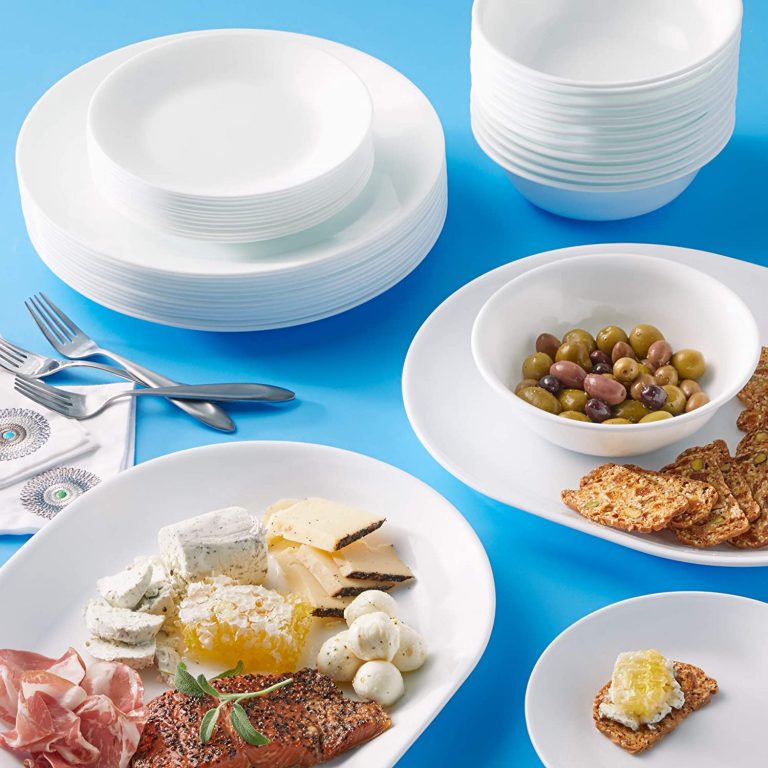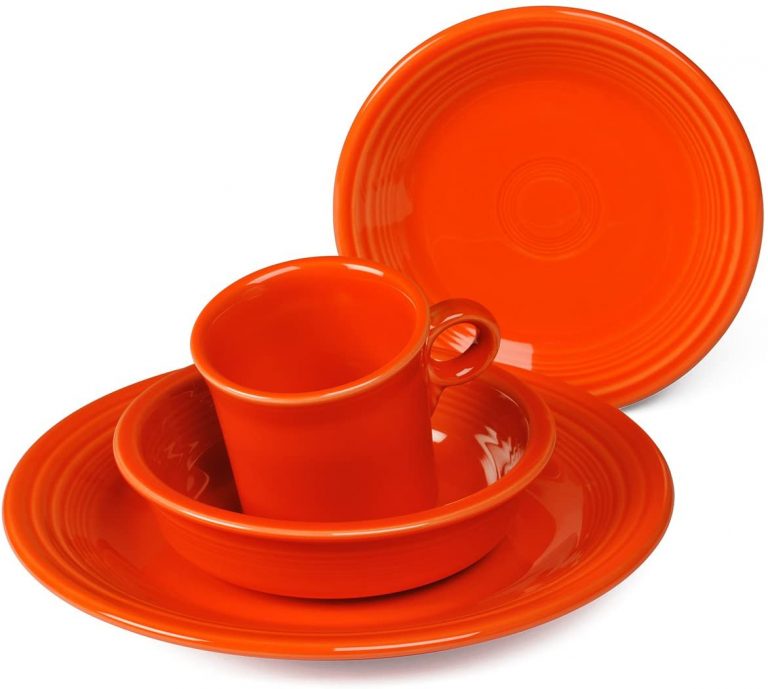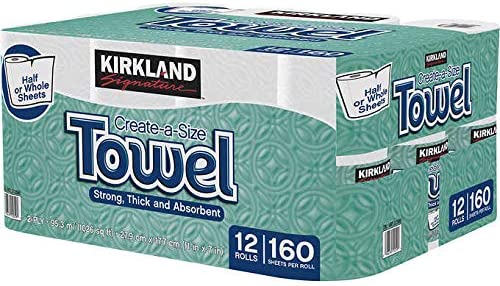How Companies can Avoid Toxic Chemicals in Cookware?
Cookware is one of those household items that we often take for granted. But what we may not realize is that many cookware products contain toxic chemicals that can be harmful to our health.
Companies that use toxic chemicals in cookware violate environmental laws and must disclose their use of poisonous substances to consumers and the government.
This blog post will discuss how companies can avoid using these harmful chemicals in their cookware products.
We’ll also provide a few tips for choosing safe and healthy cookware. So read on to learn more!
Table of Contents
What’s the Need for Worrying About Chemicals in Cookware?
When it comes to cookware, many people are unaware of the potential dangers of chemicals. Non-stick pans, for instance, are coated with polytetrafluoroethylene (PTFE).
When this substance is heated to high temperatures, it can release toxins into the air. These toxins have been linked to several health problems, including respiratory illnesses, liver damage, and cancer.
Likewise, aluminum pans can also pose a health risk. When aluminum is heated, it can leach into food. This can lead to problems such as memory loss and Alzheimer’s disease.
Additionally, when chemicals from cookware leach into the soil, they can contaminate groundwater and kill plants and animals.
Traditionally, cookware was made from natural materials like clay or wood.
However, in recent decades, many households have begun using cookware made from synthetic materials like plastic or aluminum.
While these materials are often cheaper and easier to care for than their natural counterparts, they can also release harmful chemicals into the environment.
In order to protect the environment, it is essential to choose cookware that is made from natural materials that will not release harmful chemicals.

How Can Cookware Companies Avoid Chemicals?
While users can take preventive measures to avoid the harmful effect of chemical-laden cookware on their health and environment, manufacturers can ultimately eliminate the problem from the root.
Here are some of the ways companies can avoid the use of chemicals in cookware.
Use Non-Toxic Materials
The best way to prevent the use is by leveraging natural and non-toxic materials in the manufacturing process.
If you are a cookware manufacturing company owner, focus on the following non-toxic materials.
Ceramic Cookware
Ceramic cookware is made from pure, vitrified clay that is then covered with a decorative glaze. The manufacturing process of ceramic cookware results in a non-toxic, durable, and scratch-resistant product.
Ceramic cookware can be used on all cooking surfaces, including induction cooktops. Additionally, ceramic cookware is oven-safe and can even be used under the broiler.
The main advantage of ceramic cookware is that it does not retain flavors or odors from previous meals. This makes it ideal for cooking delicate foods, such as fish or vegetables.
Another advantage of ceramic cookware is that it heats evenly, preventing hotspots that can burn food.
For these reasons, ceramic cookware is an excellent choice for manufacturers if they want to avoid toxic chemicals in cookware.

Clay Cookware
Cookware made from pure clay is slowly becoming a kitchen staple for health-conscious home cooks.
Unlike other materials, such as aluminum or stainless steel, clay is non-reactive, meaning it won’t leach toxins into food.
Additionally, clay is a naturally effective conductor of heat, so it heats evenly and slowly, reducing the risk of accidental burns.
And because it’s porous, clay cookware helps regulate moisture levels, making it ideal for dishes that benefit from a little extra steam, like risotto or braised meats.
Cast Iron Cookware
Iron is a popular material for cookware due to its excellent heat conductivity and durability. However, pure iron is also quite reactive, meaning that it can rust easily and leach iron into food.
For this reason, most iron cookware is made from cast iron, which is an alloy of iron and carbon.
Cast iron cookware is less likely to rust and less likely to leach iron into food, making it a safer option for cooking.
Additionally, cast iron cookware has a natural non-stick surface that makes it ideal for cooking delicate foods like fish or eggs.
When properly seasoned, cast iron cookware can last a lifetime, making it a wise investment for any kitchen.
Glass Cookware
Pure glass is a type of cookware made without any chemicals or other materials. This makes it a safe option for people concerned about chemical exposure.
Pure glass is also a very durable material, making it a good choice for people who want to use their cookware for a long time.
However, pure glass is also a very fragile material, so it is vital to take care when using it.
When choosing pure glass cookware, be sure to select products made by reputable manufacturers and tested for safety.
Porcelain Enamel Cookware
Porcelain enamel is a non-porous glass that forms a formidable, inert barrier on metal surfaces. It is made by fusing glass with metal under high temperatures.
Porcelain enamel cookware has many benefits over other types of cookware. It is durable, smooth, non-reactive, and easy to clean.
Additionally, it does not harbor bacteria or leach chemicals into food. For these reasons, porcelain enamel cookware is a healthier option for cooking and storing food.
It is also more environmentally friendly than other types of cookware because it does not release toxins into the atmosphere during manufacturing or disposal.
Aluminum Cookware
Aluminum is the most widely distributed metal on the planet and is used in various products, from soda cans to cookware.
While it is an abundant resource, there are some concerns about aluminum and its impact on human health and the environment.
However, when used in cookware, aluminum can help to reduce health and environmental problems. Aluminum is a good conductor of heat, so it can help to cook food evenly.
In addition, it is non-stick and easy to clean, which reduces the number of harmful chemicals that are released into the environment.
And because aluminum is lightweight and durable, it doesn’t require as much energy to produce, transport, and recycle as other types of cookware.
As a result, using aluminum in cookware has become the norm and not the exception.
Avoid Using Access Lead
It is no secret that the industrial world harms human health and the environment. One of the critical toxins that contribute to this problem is lead.
Lead is often used in manufacturing because it is inexpensive and versatile. However, this comes at a high cost.
Studies have shown that lead exposure can lead to various health problems, including learning disabilities, behavioral issues, and death.
In addition, lead pollution has been linked to many environmental problems, such as acid rain and water contamination.
As a result, companies must avoid using lead in their manufacturing processes.
Use Durable, PFAS-Free Coatings
Most cookware on the market today is coated with a synthetic fluoropolymer known as PFAS.
These coatings make cookware more durable and easy to clean, but they can also be dangerous to your health.
Studies have shown that PFAS can leach into food, causing potentially harmful health effects. In addition, PFAS are very persistent in the environment and can build up in the food chain.
For these reasons, it’s essential to choose cookware made with durable, PFAS-free coatings.
Several companies now offer PFAS-free cookware, and this type of cookware is becoming more widely available.
Undergo Thorough Testing
Manufactured cookware should go through extensive testing before being brought to market. Some manufactured cookware may contain harmful chemicals that can leach into food.
Additionally, manufacturing processes can release harmful pollutants into the environment.
Thorough testing can help identify potential health and environmental concerns so that they can be addressed before cookware is made available to consumers.
In addition to reducing health and environmental risks, thorough testing can also help to improve the quality of manufactured cookware.
By ensuring that cookware meets high standards for safety and performance, manufacturers can help to ensure that consumers are satisfied with their purchases.
How Consumers can Choose Safe and Healthy Cookware
Cookware plays a critical role in the kitchen, and it can have a significant impact on the quality of your food. When choosing cookware, it’s essential to consider both safety and health. Here are a few tips to help you choose safe and healthy cookware for your kitchen:
- Avoid cookware that contains lead or other harmful toxins. Lead can leach into food, especially when cooked at high temperatures. Look for cookware made from non-toxic materials like stainless steel or cast iron.
- Consider the material of the cookware. Some materials, like aluminum, can react with food and cause unwanted flavor changes. Other materials, like Teflon, can release harmful chemicals when heated. Choose cookware made from safe materials like stainless steel or ceramic.
- Make sure the cookware is durable and will last long. Cheap cookware is more likely to break or warp, leading to accidents in the kitchen. Invest in high-quality cookware that will last for years.
- Look for features that make cooking easier and safer. Cookware with non-stick surfaces can help prevent sticking and burning. Cookware with pour spouts or filters can make it easier to drain liquids without messing.
- Check for warranty and return policy before purchasing cookware. This will give you peace of mind if something goes wrong with the cookware.
You can choose safe and healthy cookware for your kitchen by following these tips. You can enjoy delicious, healthy meals at home with the right cookware.
Conclusion
The best cookware is the one that is safe for the environment and consumers’ health.
Unfortunately, many popular cookware brands use toxic chemicals, which can cause damage to health and the environment.
It’s high time you start worrying about the harmful consequences of using toxic chemicals in your cookware and start using the non-toxic alternatives.

Foodie and a passionate cook, I am here to share all of what I know about cooking, kitchen, and food prepping.
Follow me for delicious and healthy recipes.






